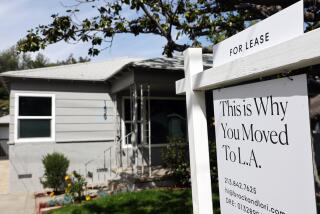Californians With Greater Savings Would Lose : Nursing Home Aid Plan a ‘Mixed Blessing’ for Some
- Share via
WASHINGTON — The two federal proposals to cushion the financial blow for the spouses of those who go into nursing homes could prove a mixed blessing for Californians: Both would improve protections for the poor and many middle-class residents, but one would be a setback to families with more than $96,000 in savings or investments.
The plan that has passed the House concentrates on helping poor people keep income that would otherwise be surrendered to cover nursing home costs; it offers less protection to upper income groups than they now receive under California’s policy.
The Senate bill would allow the full cushion for people with greater savings. A Senate-House conference committee will reconcile the versions to reach a plan that is expected to be approved this year.
Generous Policy
Among the states, California has one of the most generous policies for providing Medicaid (called Medi-Cal in California) coverage for people who enter nursing homes.
California law allows a husband and wife to divide their assets equally, with only the patient’s half applied toward the cost of the care. The policy leaves untouched the couple’s principal residence, furniture and a car. The healthy spouse gets to keep his or her half of the couple’s joint income for living expenses and is assured of a minium of $534 a month. Medicaid pays all the nursing home costs that are not satisfied by the patient’s half of the family income and assets, such as stocks, savings accounts and other properties.
Under the House bill, the healthy spouse at home would keep basic items and would receive a higher guaranteed minimum of $925 a month. However, the bill also sets a maximum value of unprotected assets that the spouse could keep as his or her share--$48,000. That would cut into the cushion for California couples with assets of more than $96,000.
The Senate version would provide a more modest increase in the guaranteed minimum living expenses, setting it at $750 a month, but it contains a state option. States such as California, Washington, Oregon and New Mexico that have plans with asset protections exceeding the federal program could keep them. Therefore, poor and middle-income residents would benefit from the $216 monthly increase over the California minimum while those with higher incomes could keep their full community property half-share.
Premiums Would Pay
In both plans, the increases in benefits would be funded by boosts in the premiums recipients pay for Medicare, which is being revised and broadened this year.
It is highly unlikely that either version will be adopted intact, with adjustments in both approaches likely to be made in the Senate-House conference session.
More to Read
Inside the business of entertainment
The Wide Shot brings you news, analysis and insights on everything from streaming wars to production — and what it all means for the future.
You may occasionally receive promotional content from the Los Angeles Times.










